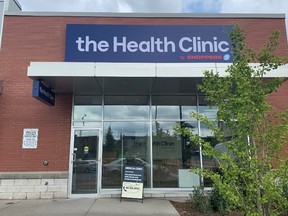
Examining Risks in Healthcare Tech & Distribution Sectors, Risks Likely to Persist in 2025 – BofA Analyst
The healthcare tech and distribution sector is set to face persistent risks in 2025, as highlighted by BofA Securities’ analysis. Key areas of concern include pharmacy benefit managers (PBMs), retail pharmacies, distributors, fertility benefits, and direct-to-consumer (D2C) pharmacies. While regulatory pressure on PBMs is expected to persist, the analyst believes this will primarily impact profit margins and growth rates rather than necessitating fundamental shifts in business models. Potential policy changes under the next administration could include adjustments to the Inflation Reduction Act, expanded access to health savings accounts (HSAs), and increased support for fertility benefits.
Key Risks in the Healthcare Tech & Distribution Sector
-
Pharmacy Benefit Managers (PBMs):
PBMs are a significant area of concern due to their regulatory oversight and impact on healthcare spending. While these entities play a crucial role in managing pharmacy benefits, the analyst notes that ongoing regulatory pressure could strain profit margins and growth rates. However, structural changes within the sector may not be anticipated in the near term. -
Retail Pharmacies:
The competitive landscape of retail pharmacies remains a focal point for risk assessment. With advancements in technology, telehealth services, and online pharmacy platforms gaining momentum, maintaining market share becomes increasingly challenging. Distributors are expected to adapt to these evolving dynamics to preserve their competitive edge. -
Fertility Benefits:
Fertility benefits are another critical area of concern. The increasing demand for reproductive health care services is likely to drive growth in this segment. However, the regulatory environment surrounding fertility benefits could introduce uncertainties that impact profitability and operational efficiency. -
Direct-to-Consumer (D2C) Pharmacies:
The rise of online pharmacies and e-commerce platforms presents a growing threat to traditional retail pharmacy models. While convenience and accessibility are significant advantages for D2C platforms, the competitive pressure they face from established players like retail chains and private-label providers could lead to pricing pressures in 2025.
Upgrades and Market Performances
Cardinal Health Inc. (NYSE: CAH)
BofA upgraded Cardinal Health to a "Buy" rating, acknowledging its strong growth potential in the pharmaceutical segment. The company is benefiting from advancements in its pharmacy benefit management (PBM) business, which could enhance earnings per share (EPS) growth through fiscal 2024. Cardinal Health’s focus on innovation, including digital engagement tools and expanded healthcare membership offerings, positions it well to capitalize on industry expansion.
Key drivers of performance include:
- Market Expansion: The company is expanding its reach in key markets, including the U.S., Canada, and Latin America.
- Digital Engagement Tools: The PBM business has been a strategic focus, with initiatives aimed at improving patient engagement and reducing drug utilization.
- Healthcare Membership Offerings: Growth in healthcare membership plans is expected to complement existing pharmacy benefits services.
Despite strong performance, BofA notes that the company’s valuations remain reasonable relative to industry peers.
Henry Schein Inc. (STO: HSB)
BofA further upgraded Henry Schein to a "Buy" rating, commending its competitive advantage in the dental sector and strategic initiatives to enhance its healthcare services offerings. The company is well-positioned to benefit from increased demand for comprehensive health care solutions, particularly in the U.S. market. Key strengths include:
- Dental Care: Henry Schein’s strong position in the dental industry provides a stable growth platform.
- Service Expansion: The company has been actively expanding its footprint in non-dental healthcare services, including home care and senior health solutions.
- Strategic Initiatives: Partnerships with leading healthcare providers and advancements in telehealth services are expected to drive long-term growth.
Henry Schein’s stock price has been elevated due to strong earnings results and improving valuations, but the analyst cautions that headwinds such as competition from established players may limit upside potential.
Conclusion
The healthcare tech and distribution sector is grappling with persistent risks related to regulatory pressures, competitive dynamics, and evolving market demands. Cardinal Health and Henry Schein have demonstrated resilience in key areas, offering growth opportunities for investors. However, the path to recovery will depend on the ability of companies to adapt to changing consumer preferences and industry trends.
This analysis provides a comprehensive overview of the risks and potential outcomes for stakeholders in the healthcare tech and distribution sector. Investors are encouraged to carefully evaluate these factors as they navigate market volatility in 2025.











